Developer Red Thread Games • Publisher Spotlight by Quantic Dream • Release August 20 • Platforms PS, Xbox, PC
I remember having a spirited discussion back at Game Informer concerning the definition of an Adventure Game. You can see where we eventually landed here, but, playing through the hands-on preview for Dustborn, I couldn’t help but wonder how it would have shaped the debate.
The game’s team throws it into the action-adventure camp. However, it felt more to me like an adventure game with combat. The distinction may seem arbitrary, but the juice of the game lies in interacting with its environment, pursuing relationships with your found family, and getting swept up in the story. Though it has serval systems integrated to connect the adventure side with its combat, Dustborn feels, at its core, like a unmitigated adventure title.
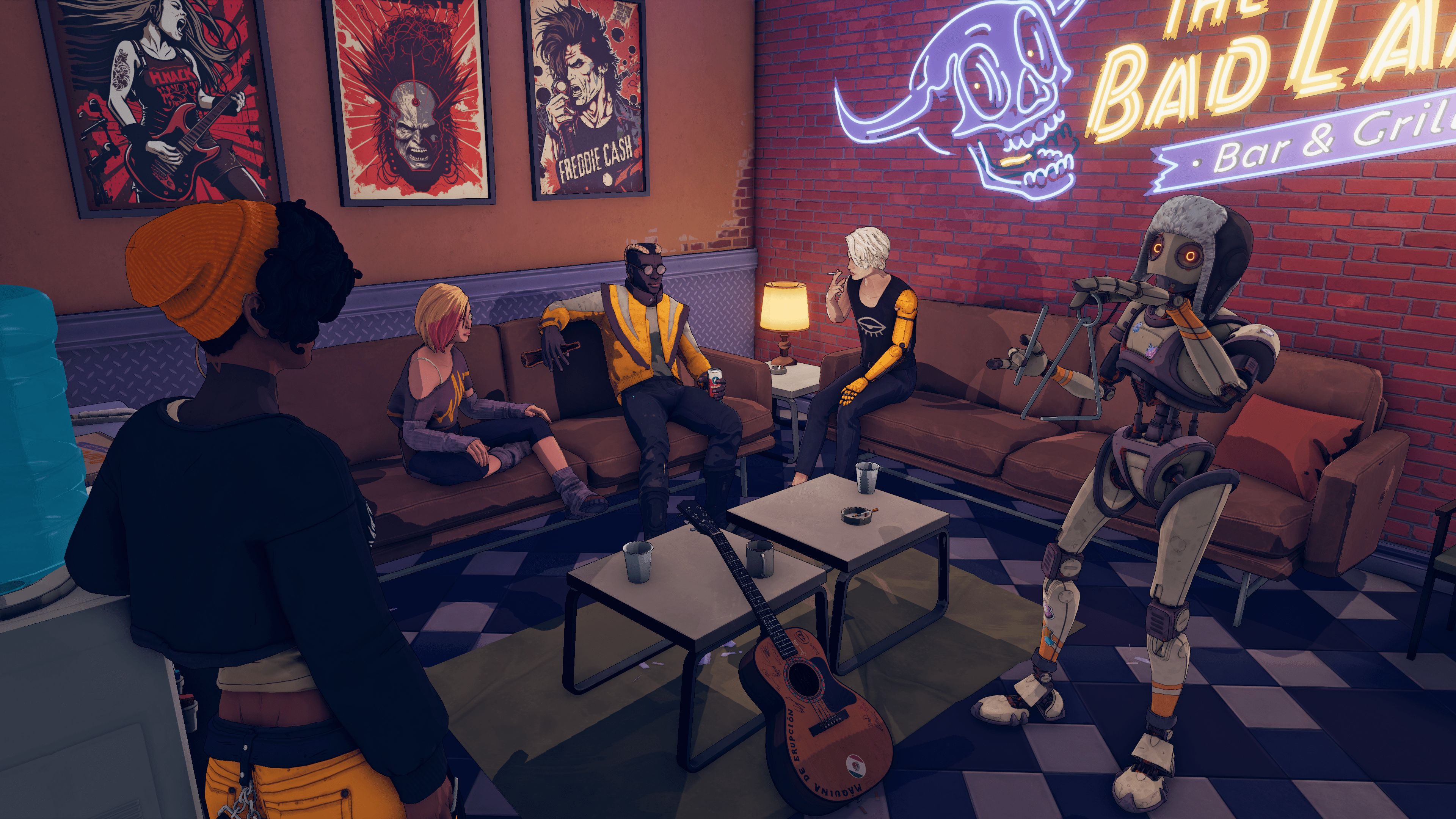
It’s 2030 and I’m somewhere in Nevada. That’s not terribly surprising as I can see cactus and rolling waves of sand glide by through the bus windows. Having no context for my current situation beyond that, I set out to familiarize myself with the team. Unfortunately for the main character, Pax, my first interaction is an argument.
Once considered my sister, Ziggy is struggling with Pax’s sudden disappearance and equally unsettling reemergence in her life. Ziggy isn’t able to process the emotional hurt, so the conversation turns to choosing to run away from the games invasive big bad — an oppressive force called Justice.
The other crew members seem more welcoming. Theo, the fatherly figure and hacker, knits quietly as they travel to the next location. Sai, an artist whose braids look like brushes dipped in purple paint, is the group’s muscle. And the sleeping Roam is stretched out in the back seat.
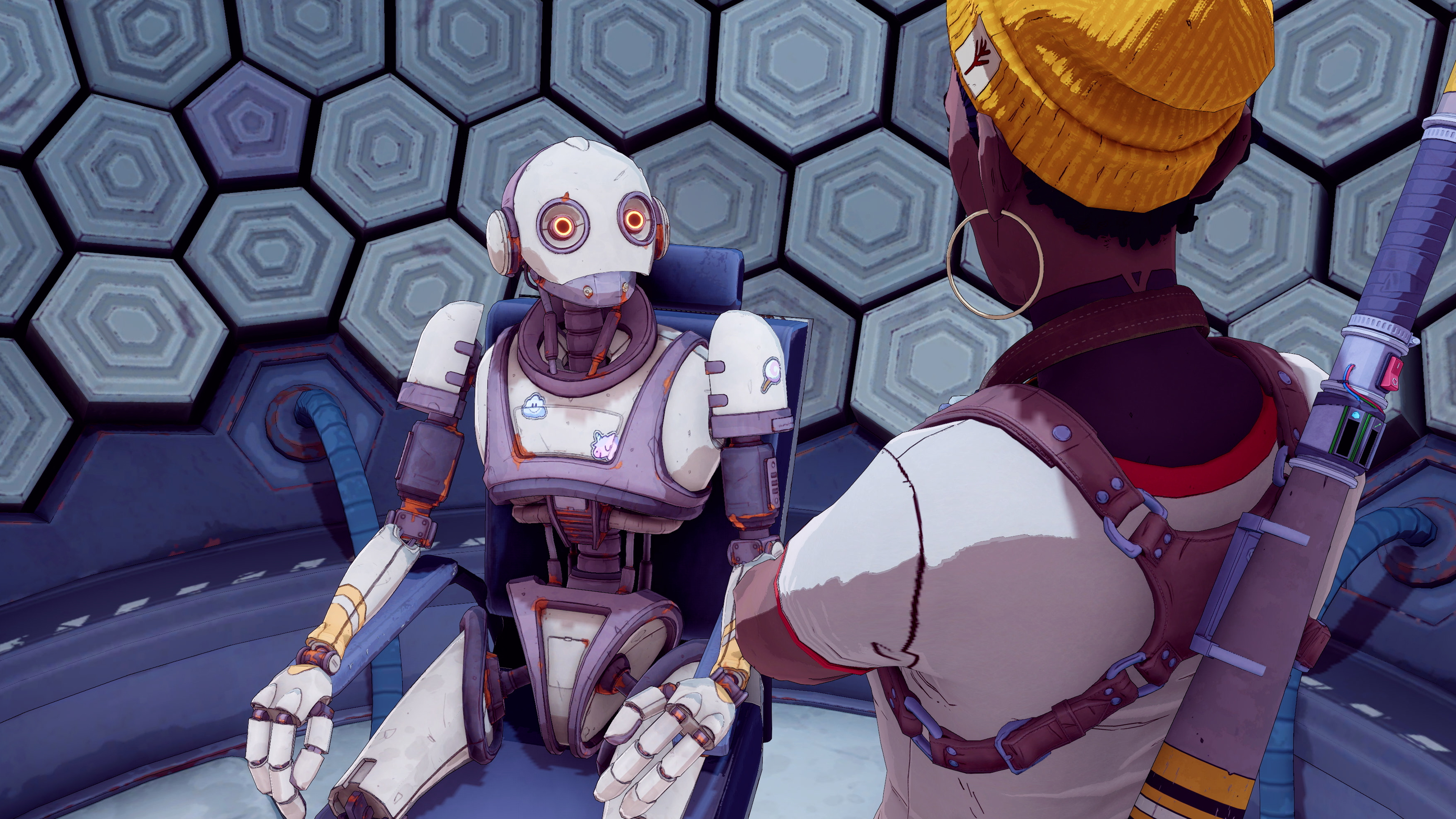
Lying on a table is a comic book that runs me through some of the team’s past events and choices. It helps catch me up on the details and gets me questioning where the other branching paths would have led, but doesn’t tell me much more than I already knew.
The map next to it moves me from the past to the future. Interacting with it triggers an overview map of an alternate reality United States. The places have unfamiliar names, but it’s clear the group started out in California and hope to make it to “The Promised Land” that is Nova Scotia. But that’s still far away.
My immediate plan revolve around a service station — a place to quickly fill up on fuel and food. However, stepping off the bus, our robotic driver hits the gas and leaves most of the party stranded in the middle of nowhere. Roam — sleeping peacefully — is still in the back seat. And now I need to figure out how to find them and get our transportation back.
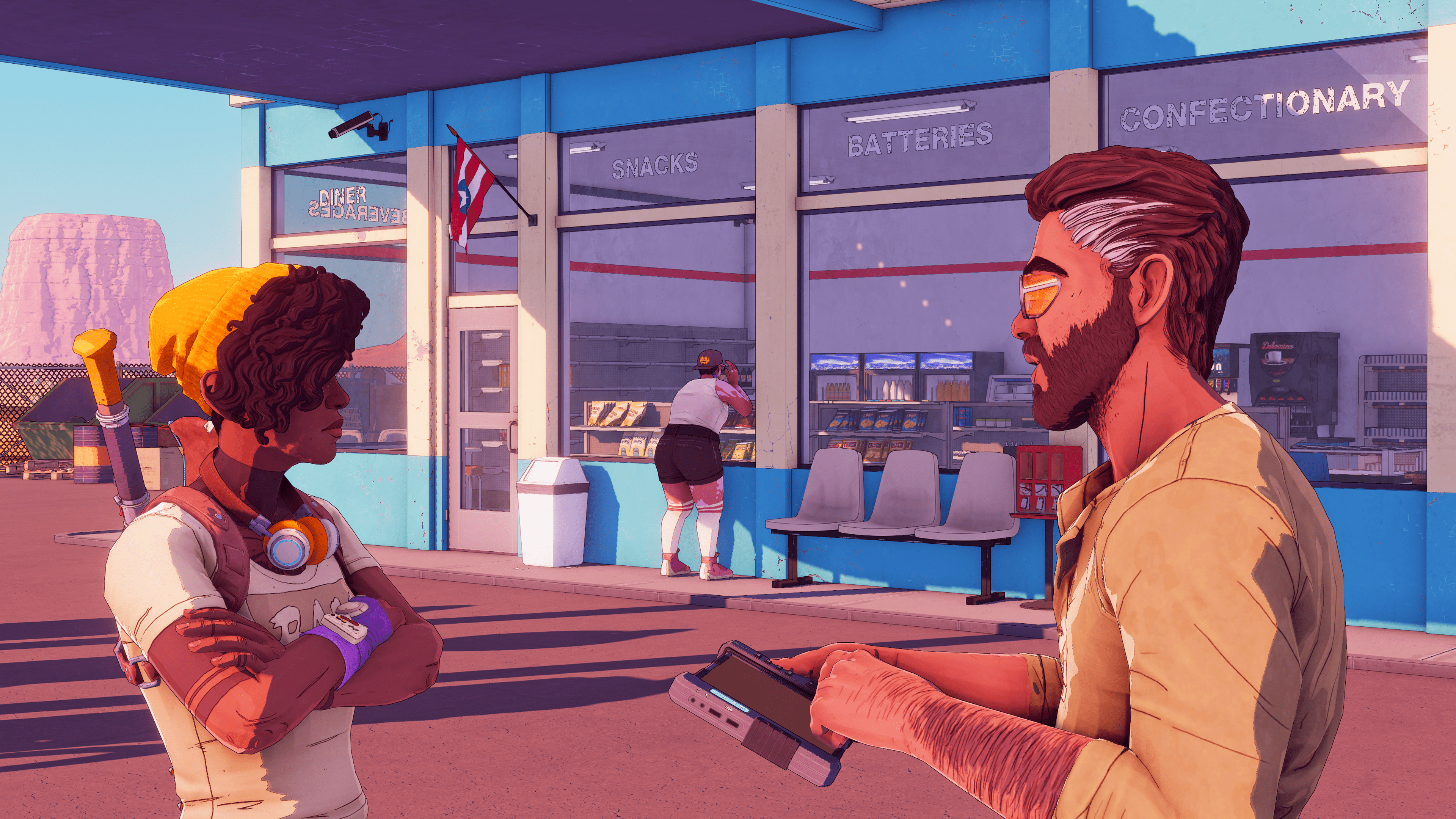
I check around the neglected building and discover various interactions that allow me to call on the aid of my companions. A back door labeled employees only prompts buttons to call on either Sai or Theo — depending on whether I want to break down the door or crack it open by more technological means. But I pass this by for the moment to go into the building to see what more informermation I can find.
The extra information I glean from the station’s robot employee gives me two possible ways out of this situation. I can either attempt to signal a horde of bikers by setting a fire where they normally hang out or fix up (and then steal) a car looked away in the garage.
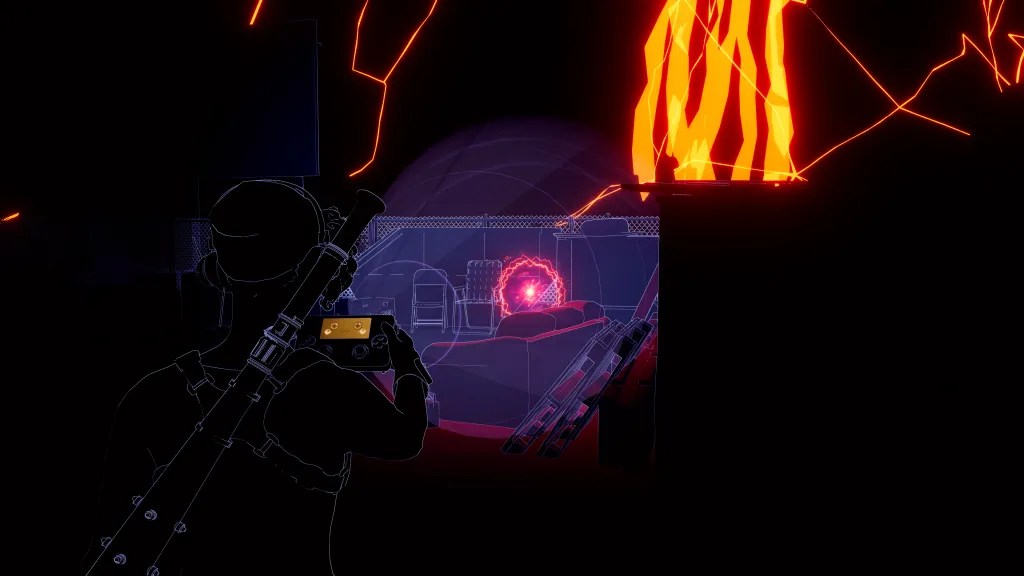
While exploring the environment in a patently adventure-like way, I discover sound echoes, which the game urges me to capture with a device on my hip. At first, I’m totally clueless way I’m working through a minigame to record these echoes, but the purpose soon becomes clear.
When I catch a specified number, I learn a new word that my unusual powers allow me to wield as a weapon. This environment’s word is HOAX. It allows me to trick people into doing what I want — in combat and outside of it. This is how the game cleverly bridges the gap between adventure and action.

I don’t get to put this new spoken weapon to use until much later in the demo, after breaking into a secret Justice faculty/school and finding a new friend named Eli. Eli is a charismatic warrior who’s returned to his former institution for personal reasons. Like the rest of the game’s characters so far, Eli acts and speaks like a real human with understandable motives and conflicting loyalties. The addition makes the already engaging group even more compelling.
Combat is not my favorite part of the experience. It is easy to catch on to, with basic attacks, blocks, and throws backed up by my shouting abilities. These last take a moment to power up, but are fun to unleash. I could convince hostile combatants to fight for me rather than against me. I could freeze them in place. And I could push them out of my way. This and a visually bombastic combo I could trigger with Ziggy kept my attention focused on the fighting, though not enough that I giddly jumped into combat.
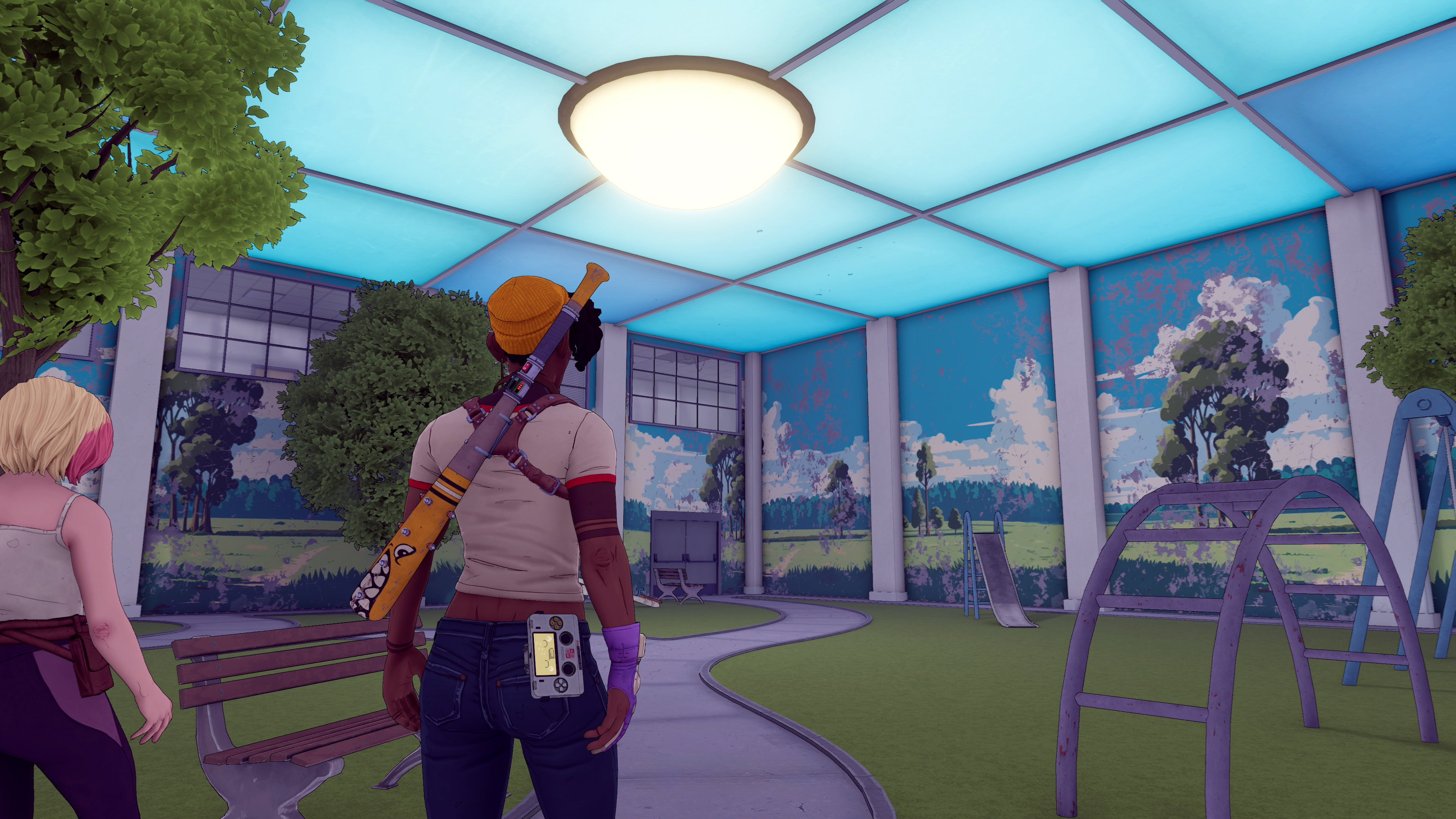
I walked away from my time with Dustborn eager to unravel more of its secrets and to see this group of misfits — which I’m already beginning to care for — safely to the end of their journey. The bus is scheduled to pick players up August 20, so be sure to be ready.



Leave a Reply